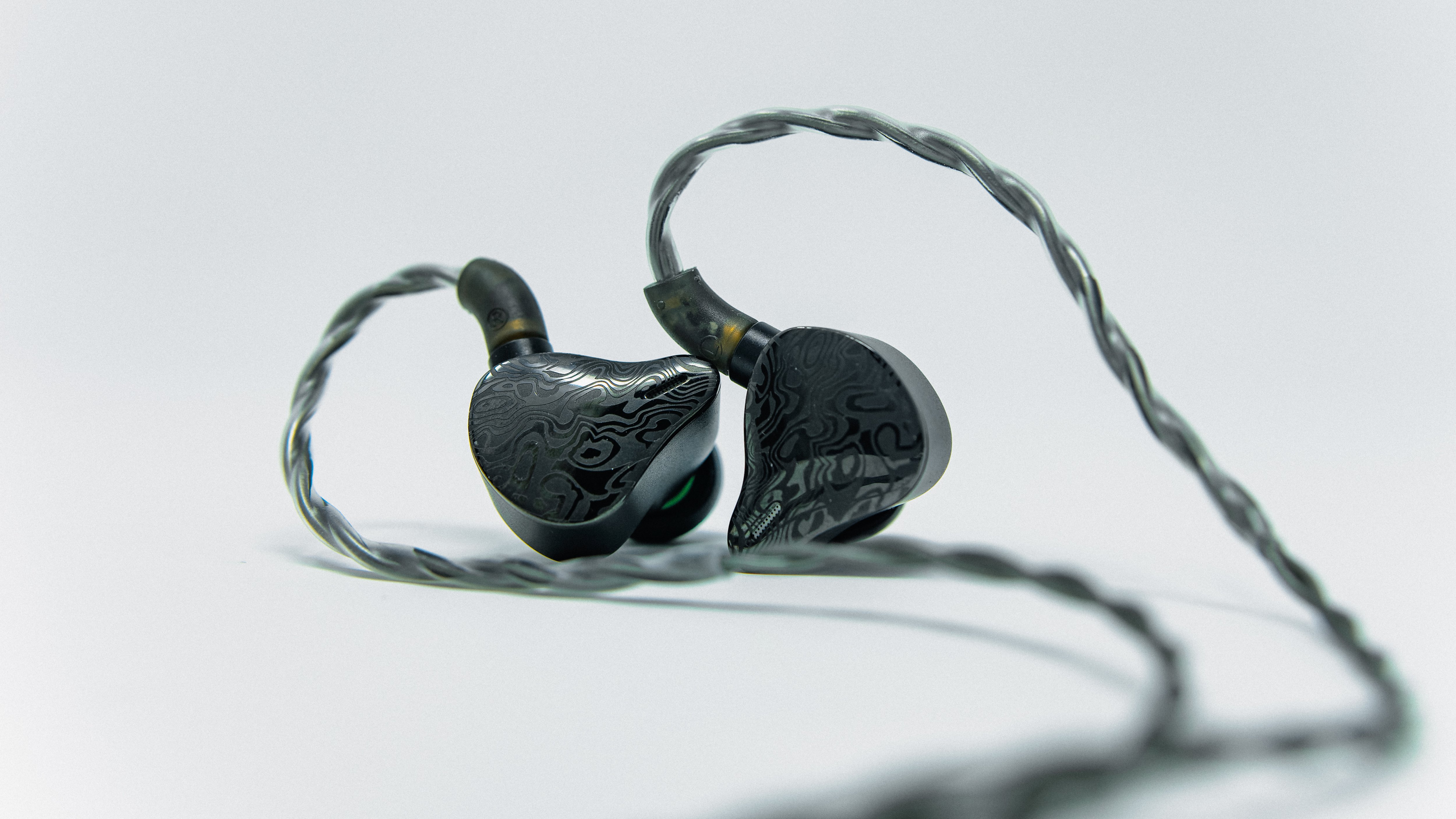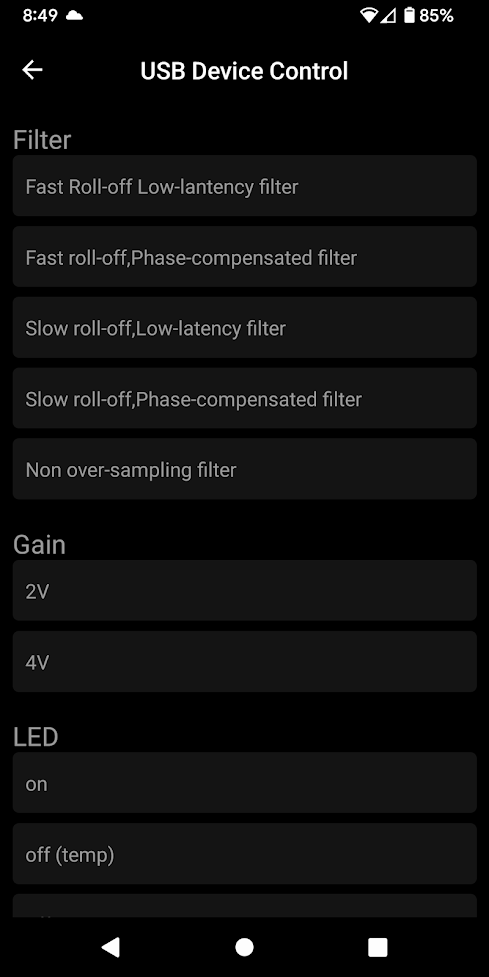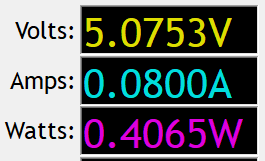About the Reviewer:
I am a U.S.-based audiophile focused on the in-ear monitor (IEM) scene. I go by darmanastartes on Head-Fi, Reddit, and most other audio forums. I am also the editor and sole-contributor to Bedrock Reviews. Since joining Head-Fi in 2016, I have published more than 100 reviews in various categories. I also occasionally publish impressions taken at Head-Fi meets and audio conventions held in the Washington D.C. area.
My review style:
While I am employed outside of the science, technology, engineering, and math arena, I have several years of post-secondary training in the physical sciences. I believe my writing style reflect this background. I have been accused of sounding robotic at times (I have also been accused of being an alt for Crinacle), but I find this description more flattering than insulting. I find that many audio reviews obfuscate as much as they illuminate. My goal is to be clear. I try to avoid flowery verbiage and describe what I hear as plainly and concisely as I can. In addition, keeping my lexicon internally consistent between reviews is very important to me. Finally, full transparency as to how the item being reviewed came into my possession is something I feel deserves to be put at the beginning of my reviews, not a postscript.
My review process:
I try to use the device being reviewed for at least two weeks before sitting down to write structured impressions. During this time, I do not go out of my way to either seek out or avoid specific genres of music. Once I have gotten a feel for the device being reviewed, I use a specific set of test tracks which spans the range of my musical interests to evaluate different aspects of the device’s performance.
Gear Frequently Used in Reviews:
I primarily use the Colorfly CDA-M2 as my desktop source. My primary source for portable listening is the Qudelix 5K. I prefer to use the balanced outputs of these devices when possible. I also have an early-model JDS Labs The Element.
Measurements:
https://bedrock.squig.link/index.html
My measurements are conducted with a clone IEC-711 coupler. Measurements above 10 kHz are not reliable.
Tuning Preferences:
I generally like Harman-ish targets. I like some more than others. I am very partial to Toranku’s target curve.
My musical taste:
I like heavy metal, a wide variety of electronic music, hip-hop, video game and motion picture soundtracks, and female fronted electro-pop from the early 2010s. Please visit my last.fm profile if you are interested in learning more.
Reviews and Impressions:
IO Audio Volare Review
Simgot EA 500LM Review
Moondrop May Review
Simgot EA1000 Review
Colorfly CDA-M2 Review
Colorfly CDA-M1P Review
EPZ Q5 Impressions
Simgot EM6L Impressions
Hidizs S9 Pro Plus Review
Moondrop Aria 2 Impressions
Truthear Nova Review
Dekoni x HiFiMan Cobalt Review
Hidizs MS1 Galaxy Impressions
Moondrop Para Review
Moondrop FreeDSP Review
Moondrop Dawn Pro Review
Hidizs MP145 Review
Moondrop Starfield II Impressions
Moondrop Chu II Review
Audirect Beam 4 Review
Tanchjim Space Lite Impressions
HiBy R6 Pro II Impressions
Audirect Atom 3 Impressions
Moondrop Jiu Review
HiBy Zeta Review
Truthear Zero: Red Review
Kiwi Ears Orchestra Lite Review
TinHiFi C Series (C2, C3, C5) Impressions
Moondrop LAN Review
TinHiFi T4 Plus Review
Truthear Hola Review
Truthear Shio Review
Dunu Kima Review
Kiwi Ears Cadenza Review
Truthears Hexa Review
Dunu Talos Review
TinHiFi T2 DLC Review
Moondrop Stellaris Review
7Hz Salnotes Zero Review
7Hz x Crinacle Salnotes Dioko Review
Letshuoer D13 Review
Raptgo Hook-X Review
Truthear Zero Review
CCA CRA+ Review
Moondrop Dawn Review
Dunu Vulkan Review
Topping D90SE Impressions
Meze Audio Advar Review
HZSound Waist Drum
Symphonium Audio Triton
Moondrop Chu
7Hz Eternal
Tanchjim Ola
Ikko Zerda ITM01
Dunu Titan S
BQEYZ Autumn
Audirect Beam 3 Pro
KZ CRN
TinHiFi T3 Plus
Hidizs S3 Pro
Reiyin DA-Plus
Seeaudio Bravery
Symphonium Audio Helios
Dunu Falcon Pro
Ambient Dynamics AD-006 Lyndale
Seeaudio Neo
Audirect Atom 2
CSA CSN
Moondrop Variations
Tanchjim Tanya
Cayin Fantasy
Thieaudio Legacy 2
Kinera BD005
TinHiFi T5
Softears RSV
Hidizs H2
Moondrop Aria
Hiby FC3
Seeaudio Yume
Hidizs S9
Moondrop Illumination
E1DA 9038D
ADV Eartune Fidelity U
Moondrop SSP
TRN V90S
Dunu Luna
V-Moda M-200
Blon BL-05S
KZ ZAX
CVJ CSA
Kbear KB04
E1DA 9038S
TinHiFi T2 Plus
Moondrop SSR
TRN VX
Smabat ST-10S
Thieaudio Voyager 3
Moondrop S8
Jade Audio EA3
Audiofly AF1120 Mk2
Radsone Earstudio HUD100
HiFiMan Jade II
Moondrop Starfield
Kinera Tyr
Meizu HiFi Pro
Dunu DM-480
Kbear Diamond
iBasso IT04
Kbear Knight
Shozy Form 1.1
xDuoo Link
Nicehck DB3
TFZ S2 Pro
TRN V90
KZ ZSX
Blon BL-03
Nicehck ME80
Tripowin TP10
Tanchjim Oxygen
Smabat ST-10
Simgot EM1
KZ AS10
Fiio M9
Nicehck N3
CCA C10
Nicehck M6
Nicehck EB2
Meeture MT3
EZAudio D4
Fiio FH5
iFi xDSD
Rose North Forest
UiiSii CM5
Cayin N5ii
Mixcder X5
Archeer AH07
Yersen FEN-2000
Meze 99 Neo
Fiio Q1 MkII
Shanling M1, M2s and M3s
Hidizs AP60II
Archeer A225
KZ ATE
Cayin N3
Round-Ups:
2023 Assorted End of Year Impressions, Part 1: TinHiFI C0 Elf, Kinera Celest Wyvern Pro, Shanling Sono
2023 Assorted End of Year Impressions, Part 2: SMSL SU-1, SMSL D6S, SMSL DA1
IEM Round-Up: The Worst of 2020
Meet and Convention Impressions (Under Construction):
CanJam NYC 2024 Impressions
Capital Audiofest 2022 Impressions
Capital Audio Festival 2019 — Quick Takes
Glen Echo, Maryland Head-Fi Meet - April 30, 2022
Tutorials (Under Construction):
UAPP Hardware Volume Workaround
I am a U.S.-based audiophile focused on the in-ear monitor (IEM) scene. I go by darmanastartes on Head-Fi, Reddit, and most other audio forums. I am also the editor and sole-contributor to Bedrock Reviews. Since joining Head-Fi in 2016, I have published more than 100 reviews in various categories. I also occasionally publish impressions taken at Head-Fi meets and audio conventions held in the Washington D.C. area.
My review style:
While I am employed outside of the science, technology, engineering, and math arena, I have several years of post-secondary training in the physical sciences. I believe my writing style reflect this background. I have been accused of sounding robotic at times (I have also been accused of being an alt for Crinacle), but I find this description more flattering than insulting. I find that many audio reviews obfuscate as much as they illuminate. My goal is to be clear. I try to avoid flowery verbiage and describe what I hear as plainly and concisely as I can. In addition, keeping my lexicon internally consistent between reviews is very important to me. Finally, full transparency as to how the item being reviewed came into my possession is something I feel deserves to be put at the beginning of my reviews, not a postscript.
My review process:
I try to use the device being reviewed for at least two weeks before sitting down to write structured impressions. During this time, I do not go out of my way to either seek out or avoid specific genres of music. Once I have gotten a feel for the device being reviewed, I use a specific set of test tracks which spans the range of my musical interests to evaluate different aspects of the device’s performance.
Gear Frequently Used in Reviews:
I primarily use the Colorfly CDA-M2 as my desktop source. My primary source for portable listening is the Qudelix 5K. I prefer to use the balanced outputs of these devices when possible. I also have an early-model JDS Labs The Element.
Measurements:
https://bedrock.squig.link/index.html
My measurements are conducted with a clone IEC-711 coupler. Measurements above 10 kHz are not reliable.
Tuning Preferences:
I generally like Harman-ish targets. I like some more than others. I am very partial to Toranku’s target curve.
My musical taste:
I like heavy metal, a wide variety of electronic music, hip-hop, video game and motion picture soundtracks, and female fronted electro-pop from the early 2010s. Please visit my last.fm profile if you are interested in learning more.
Reviews and Impressions:
IO Audio Volare Review
Simgot EA 500LM Review
Moondrop May Review
Simgot EA1000 Review
Colorfly CDA-M2 Review
Colorfly CDA-M1P Review
EPZ Q5 Impressions
Simgot EM6L Impressions
Hidizs S9 Pro Plus Review
Moondrop Aria 2 Impressions
Truthear Nova Review
Dekoni x HiFiMan Cobalt Review
Hidizs MS1 Galaxy Impressions
Moondrop Para Review
Moondrop FreeDSP Review
Moondrop Dawn Pro Review
Hidizs MP145 Review
Moondrop Starfield II Impressions
Moondrop Chu II Review
Audirect Beam 4 Review
Tanchjim Space Lite Impressions
HiBy R6 Pro II Impressions
Audirect Atom 3 Impressions
Moondrop Jiu Review
HiBy Zeta Review
Truthear Zero: Red Review
Kiwi Ears Orchestra Lite Review
TinHiFi C Series (C2, C3, C5) Impressions
Moondrop LAN Review
TinHiFi T4 Plus Review
Truthear Hola Review
Truthear Shio Review
Dunu Kima Review
Kiwi Ears Cadenza Review
Truthears Hexa Review
Dunu Talos Review
TinHiFi T2 DLC Review
Moondrop Stellaris Review
7Hz Salnotes Zero Review
7Hz x Crinacle Salnotes Dioko Review
Letshuoer D13 Review
Raptgo Hook-X Review
Truthear Zero Review
CCA CRA+ Review
Moondrop Dawn Review
Dunu Vulkan Review
Topping D90SE Impressions
Meze Audio Advar Review
HZSound Waist Drum
Symphonium Audio Triton
Moondrop Chu
7Hz Eternal
Tanchjim Ola
Ikko Zerda ITM01
Dunu Titan S
BQEYZ Autumn
Audirect Beam 3 Pro
KZ CRN
TinHiFi T3 Plus
Hidizs S3 Pro
Reiyin DA-Plus
Seeaudio Bravery
Symphonium Audio Helios
Dunu Falcon Pro
Ambient Dynamics AD-006 Lyndale
Seeaudio Neo
Audirect Atom 2
CSA CSN
Moondrop Variations
Tanchjim Tanya
Cayin Fantasy
Thieaudio Legacy 2
Kinera BD005
TinHiFi T5
Softears RSV
Hidizs H2
Moondrop Aria
Hiby FC3
Seeaudio Yume
Hidizs S9
Moondrop Illumination
E1DA 9038D
ADV Eartune Fidelity U
Moondrop SSP
TRN V90S
Dunu Luna
V-Moda M-200
Blon BL-05S
KZ ZAX
CVJ CSA
Kbear KB04
E1DA 9038S
TinHiFi T2 Plus
Moondrop SSR
TRN VX
Smabat ST-10S
Thieaudio Voyager 3
Moondrop S8
Jade Audio EA3
Audiofly AF1120 Mk2
Radsone Earstudio HUD100
HiFiMan Jade II
Moondrop Starfield
Kinera Tyr
Meizu HiFi Pro
Dunu DM-480
Kbear Diamond
iBasso IT04
Kbear Knight
Shozy Form 1.1
xDuoo Link
Nicehck DB3
TFZ S2 Pro
TRN V90
KZ ZSX
Blon BL-03
Nicehck ME80
Tripowin TP10
Tanchjim Oxygen
Smabat ST-10
Simgot EM1
KZ AS10
Fiio M9
Nicehck N3
CCA C10
Nicehck M6
Nicehck EB2
Meeture MT3
EZAudio D4
Fiio FH5
iFi xDSD
Rose North Forest
UiiSii CM5
Cayin N5ii
Mixcder X5
Archeer AH07
Yersen FEN-2000
Meze 99 Neo
Fiio Q1 MkII
Shanling M1, M2s and M3s
Hidizs AP60II
Archeer A225
KZ ATE
Cayin N3
Round-Ups:
2023 Assorted End of Year Impressions, Part 1: TinHiFI C0 Elf, Kinera Celest Wyvern Pro, Shanling Sono
2023 Assorted End of Year Impressions, Part 2: SMSL SU-1, SMSL D6S, SMSL DA1
IEM Round-Up: The Worst of 2020
Meet and Convention Impressions (Under Construction):
CanJam NYC 2024 Impressions
Capital Audiofest 2022 Impressions
Capital Audio Festival 2019 — Quick Takes
Glen Echo, Maryland Head-Fi Meet - April 30, 2022
Tutorials (Under Construction):
UAPP Hardware Volume Workaround
Last edited:














































